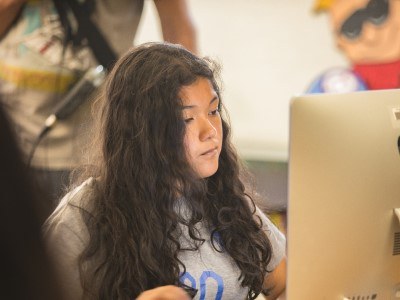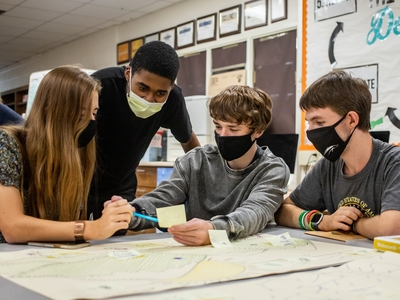Interdisciplinary Learning Spaces: Bridging Knowledge across Subjects
Topics
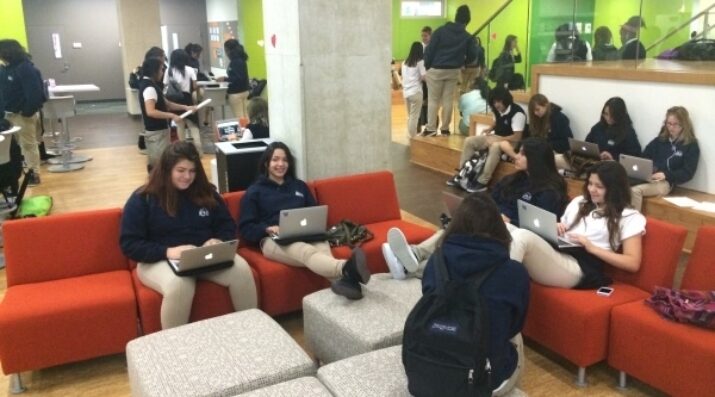
We’ve all had the experience of truly purposeful, authentic learning and know how valuable it is. Educators are taking the best of what we know about learning, student support, effective instruction, and interpersonal skill-building to completely reimagine schools so that students experience that kind of purposeful learning all day, every day.
Interdisciplinary learning environments encourage ownership of learning and support a collaborative process where both teachers and students share the space.
Innovations in teaching and learning have had little impact on modern space planning and school architecture. We know that students and teachers do better when they have variety, flexibility, and comfort in their environment. This series examines how next generation learning spaces impact the learning experience for students and their teachers. If you have the opportunity to design a new school building or renovate an existing building, or if you are interested in using space better in your school, this series can help ensure that the physical spaces in your building promote the skills students need to thrive and contribute to an ever-changing global society.
Interdisciplinary learning helps students understand the connections between different areas of knowledge, fostering deeper learning, critical thinking, and real-world problem-solving. It encourages collaboration, creativity, and communication, skills that are essential in today’s world. By bridging disciplines, schools can prepare students not only for academic success but also for the challenges and opportunities they will encounter in the workforce and society at large. Integrating interdisciplinary approaches into the classroom promotes a more holistic, engaging, and meaningful educational experience.
In an interdisciplinary school, teachers and students work across disciplines exploring opportunities at the intersections of learning. This paradigm shift from the teacher-centered one-dimensional departmental learning environment (“Sage on Stage”) to learner-centered multidimensional environments (“Guide on the Side”) simultaneously engages students in a wide range of activities. This type of synergistic relationship between the learner and the teacher fosters a process where educators engage students relative to how the students want to spend their time exploring complex, interdisciplinary opportunities. By embracing this learner-centered approach, students and teachers together create excellence through a successful, inspiring curriculum and culture.
Instead of teaching subjects in isolation, interdisciplinary learning encourages students to see connections between areas like math, science, history, and the arts to address complex questions, problems, or projects. By working across traditional subject boundaries, students develop a more holistic understanding of concepts, encourage critical thinking, and prepare for real-world challenges that require diverse skills and perspectives.
Interdisciplinary environments encourage ownership and support a collaborative process where both teachers and students share the teaching and learning spaces. These integrated spaces allow students to foster skills such as citizenship, critical thinking, creativity, communication, and problem-solving, within collaborative activities that promote hands-on, real-world learning.
The art of learning, as well as its effects and results, should be on display throughout the school.
Teachers also need dedicated planning spaces to work together rather than plan by themselves in their classroom learning studios. Current research strongly suggests that interdisciplinary, collaborative teacher planning and the spaces that support it are an essential component to creating learning environments that address the diverse and changing needs of today’s and future learners.

For interdisciplinary learning to work, teachers need spaces to gather and collaborate too. Credit: wavebreakmedia_micro on freepik
Key Elements of Interdisciplinary Learning
Integration of Subjects: Interdisciplinary learning blurs the lines between traditional subjects. For example, a project that combines science, technology, engineering, and math (STEM) might also include elements of social studies and art. The aim is to show how knowledge in one area can influence and inform understanding in another.
Thematic Focus: Rather than focusing on isolated topics, interdisciplinary learning often revolves around a central theme or real-world problem. This theme becomes the lens through which students explore various subjects. For example, students might investigate climate change, exploring it through the lenses of science (environmental studies), history (historical impacts), economics (costs and solutions), and literature (stories of resilience and adaptation).
Collaborative Learning: This approach encourages collaboration between students and between teachers. Teachers from different disciplines work together to design lessons that incorporate multiple subjects. Students also collaborate, bringing diverse perspectives to solve complex problems, which mirrors how professionals often work across disciplines in the real world.
Real-World Applications: Interdisciplinary learning often involves problem-based or project-based learning (PBL), where students apply their knowledge to real-world situations. This practical application helps them see the relevance of their studies, deepening their engagement and understanding.
Inquiry-Based Learning: Students ask questions, explore multiple solutions, and engage in research to investigate issues. This process fosters curiosity and allows students to take charge of their learning, guiding them through a process of discovery and synthesis.
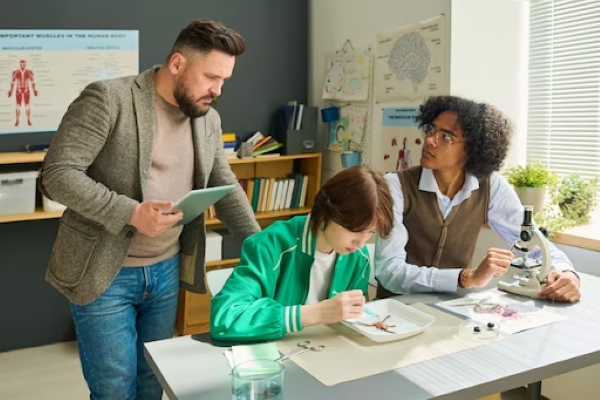
Credit: pressmaster on freepik.
Benefits of Interdisciplinary Learning
Deeper Understanding: By connecting concepts across subjects, students gain a richer understanding of how knowledge is interconnected. For instance, studying the history of a scientific discovery alongside the science behind it allows students to see how social, cultural, and political factors influence scientific progress.
Critical Thinking and Problem Solving: Interdisciplinary learning encourages students to think critically and creatively. They learn to approach problems from multiple angles and develop more comprehensive solutions. This helps foster adaptability, a vital skill in an ever-changing world.
Engagement and Motivation: Students often find interdisciplinary projects more engaging because they see how what they are learning is connected to real-world issues and interests. When subjects come together in a relevant and exciting way, students are more likely to stay motivated and invested in their learning.
Collaboration and Communication: Working across disciplines often involves teamwork, which helps students develop collaboration and communication skills. These are essential skills in both academic and professional settings, where working with diverse teams is common.
Development of Transferable Skills: By approaching problems in a holistic way, students develop transferable skills such as research, analysis, project management, and presentation. These skills will benefit them in higher education and careers, where the ability to work across disciplines is increasingly valued.
Real-World Relevance: Interdisciplinary learning often addresses complex, real-world issues like climate change, poverty, or technology's impact on society. These kinds of projects help students understand the relevance of what they are learning and encourage them to see themselves as active participants in addressing these global challenges.

Credit: Freepik
Examples of Interdisciplinary Learning
STEM Projects: A project on renewable energy might involve science lessons on energy systems and environmental science, math lessons on calculating energy output and efficiency, engineering lessons on building wind turbines, and social studies lessons on the impact of energy on society. This project would allow students to explore how different disciplines work together to solve an issue.
Historical Inquiry: Students studying a historical event, like the Industrial Revolution, might look at its impact on society (social studies), the scientific innovations that led to industrialization (science), and the literature that emerged during that period (language arts). They could even examine how art was used to document the era’s changes, blending art and history.
Sustainability Initiatives: Students could engage in an interdisciplinary project on sustainability. Science lessons would cover the biology of ecosystems, while economics would discuss the financial aspects of sustainable living. Art could be used to create awareness posters, and social studies could look at global policies for environmental protection.
Literature and Science: Students could read a novel like Frankenstein and then explore its themes in light of modern scientific ethics and technological advances. They could discuss how science impacts society in both historical and modern contexts, blending literature, science, and philosophy.
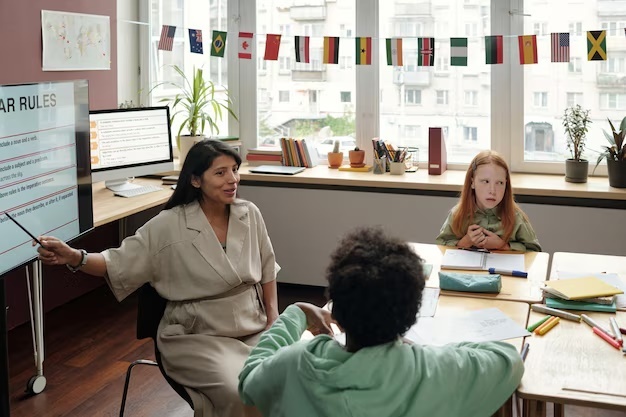
Credit: pressmaster on freepik.
Considerations
Curriculum Constraints: Traditional curricula are often structured by distinct subjects, and integrating them into interdisciplinary projects can be difficult within the time constraints of a typical school day. Teachers may need to collaborate across departments, which may require additional planning and coordination.
Assessment Methods: Standardized testing typically focuses on individual subjects, which can make it difficult to assess interdisciplinary learning in a traditional way. Educators may need to explore alternative assessment methods, such as portfolios, presentations, or project-based assessments, to evaluate students' holistic learning.
Teacher Expertise: Teachers are often specialists in one subject, so interdisciplinary teaching may require professional development or additional training. Collaboration across disciplines may also require teachers to step outside their comfort zones and adopt new teaching strategies.
Student Challenges: Some students may struggle with interdisciplinary learning because it requires a different approach to problem-solving. The complexity of integrating various subjects might overwhelm students who are used to working within one subject at a time.
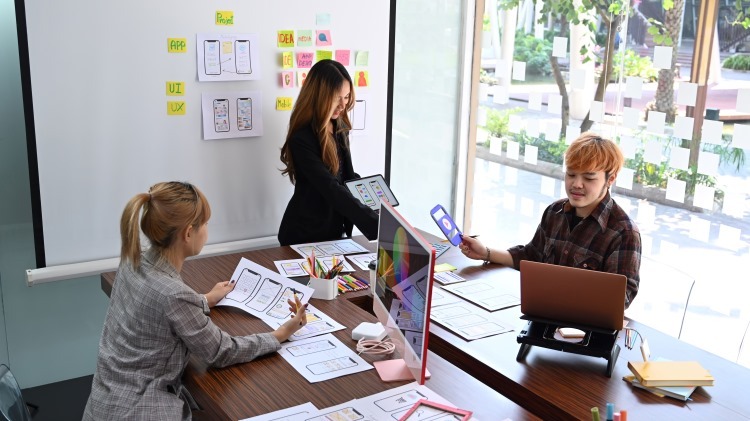
Credit: sodawhiskey on freepik.
How to Integrate Interdisciplinary Learning in Schools
Team Teaching: Teachers from different disciplines can collaborate to design joint lessons that incorporate aspects of their respective subjects. This might involve planning joint units or projects, where students work on assignments that draw on knowledge from multiple subjects.
Project-Based Learning: Using projects as a central method for interdisciplinary learning allows students to explore real-world problems while drawing on multiple disciplines. Teachers can design projects where students investigate complex topics that require input from different subject areas.
Flexible Curriculum Design: Schools can create flexible curricula that allow for the integration of subjects based on thematic units. This allows students to explore topics in depth while seeing how different fields contribute to understanding the issue.
Encourage Student Choice: Offering students the opportunity to choose projects or themes that interest them can help make interdisciplinary learning more engaging. By connecting different subjects to real-world issues or personal interests, students are more likely to see the relevance and engage with the material.
Community and Global Connections: Interdisciplinary collaboration can extend beyond the school community where students engage with experts, community organizations, or even global partners. This real-world connection can help students see the broader impact of their learning and encourage them to apply their skills to make a difference.
Learn More
See the whole series about next gen learning spaces.
Photo at top: The interdisciplinary spaces at e3 Civic High, co-located in the San Diego Public Library, foster a collegial sense of community. They offer seating options for peer-to-peer mentoring and networking, movable and fixed displays, and programmable spaces for small group meetings. Courtesy of NGLC.



